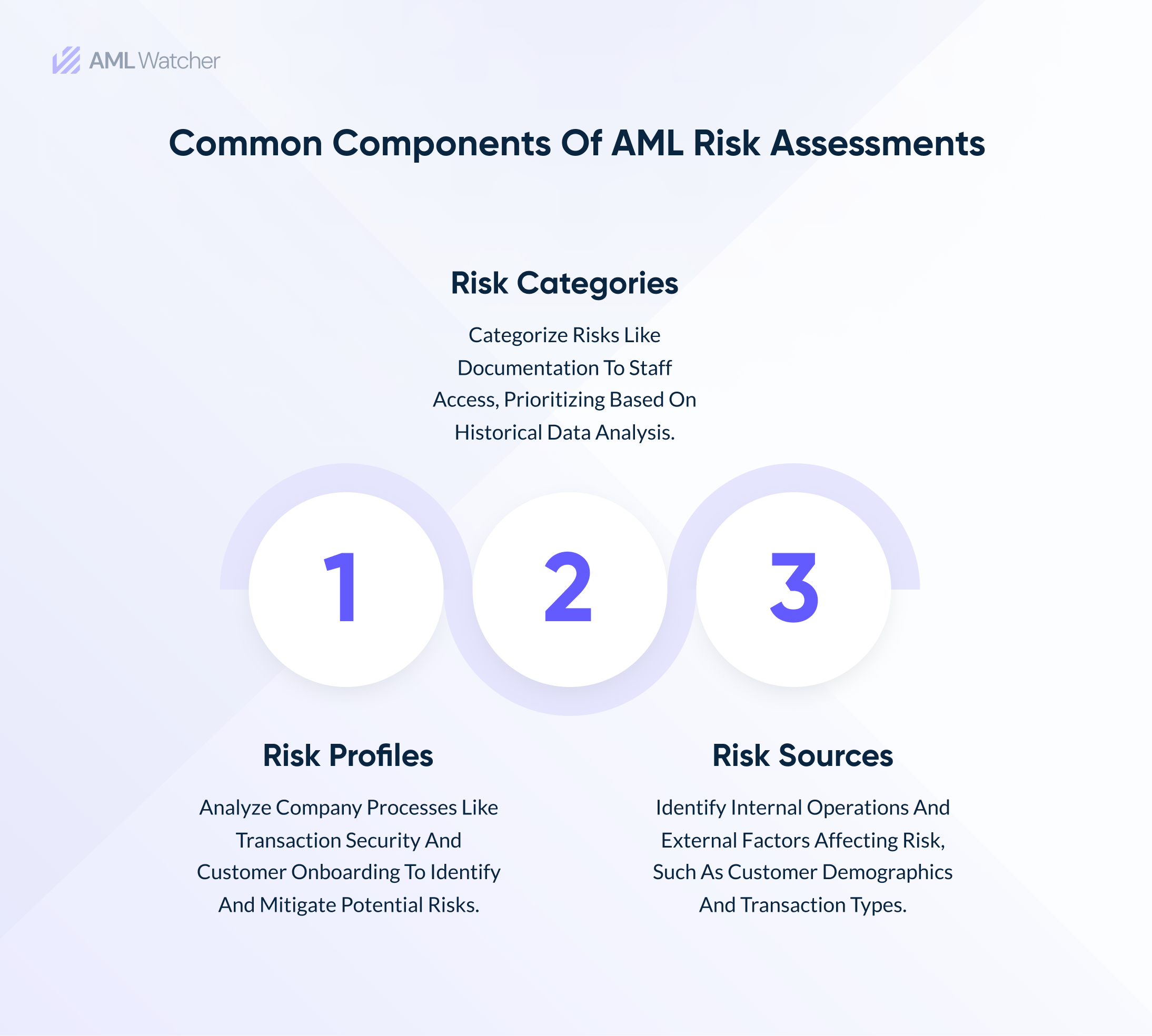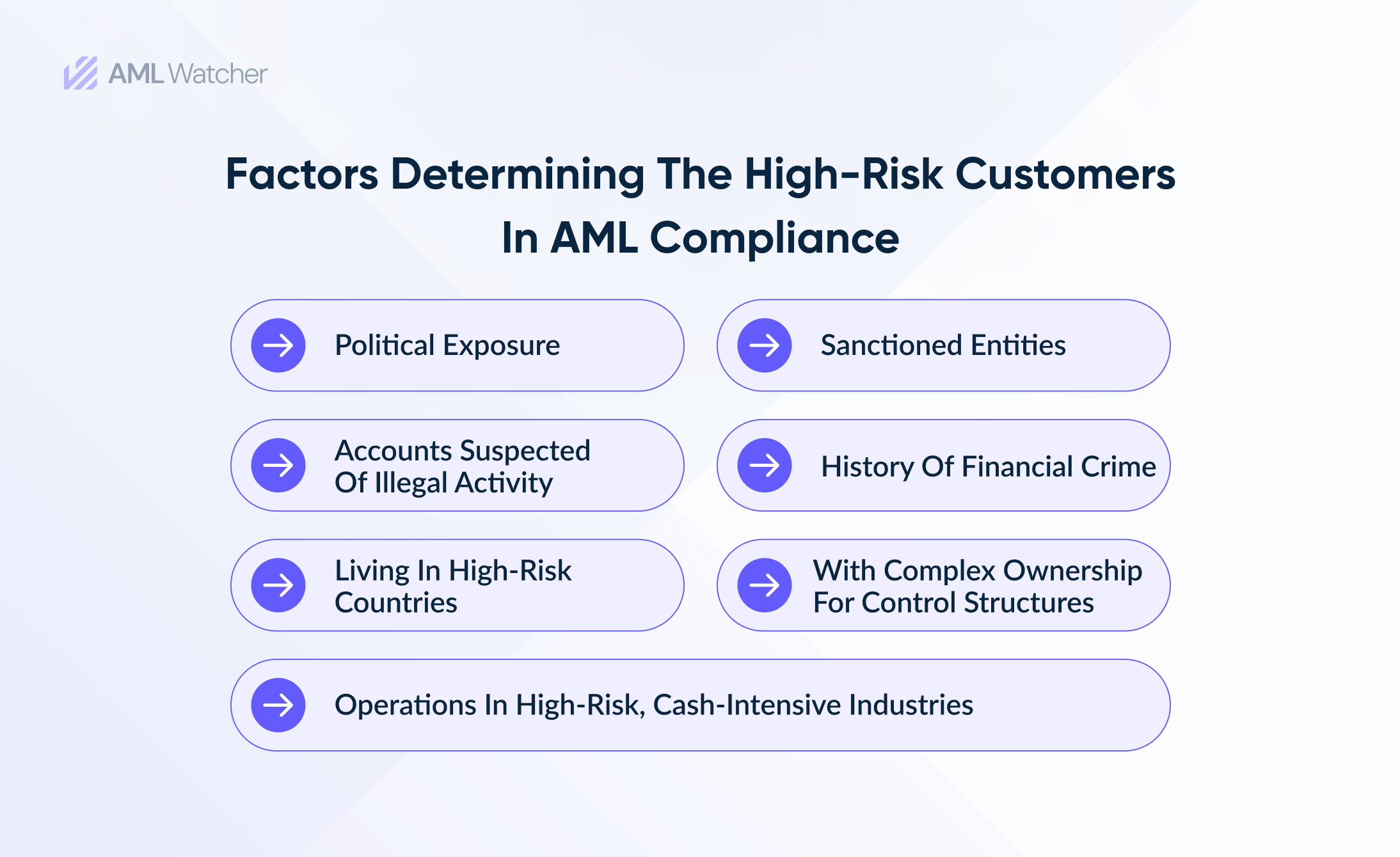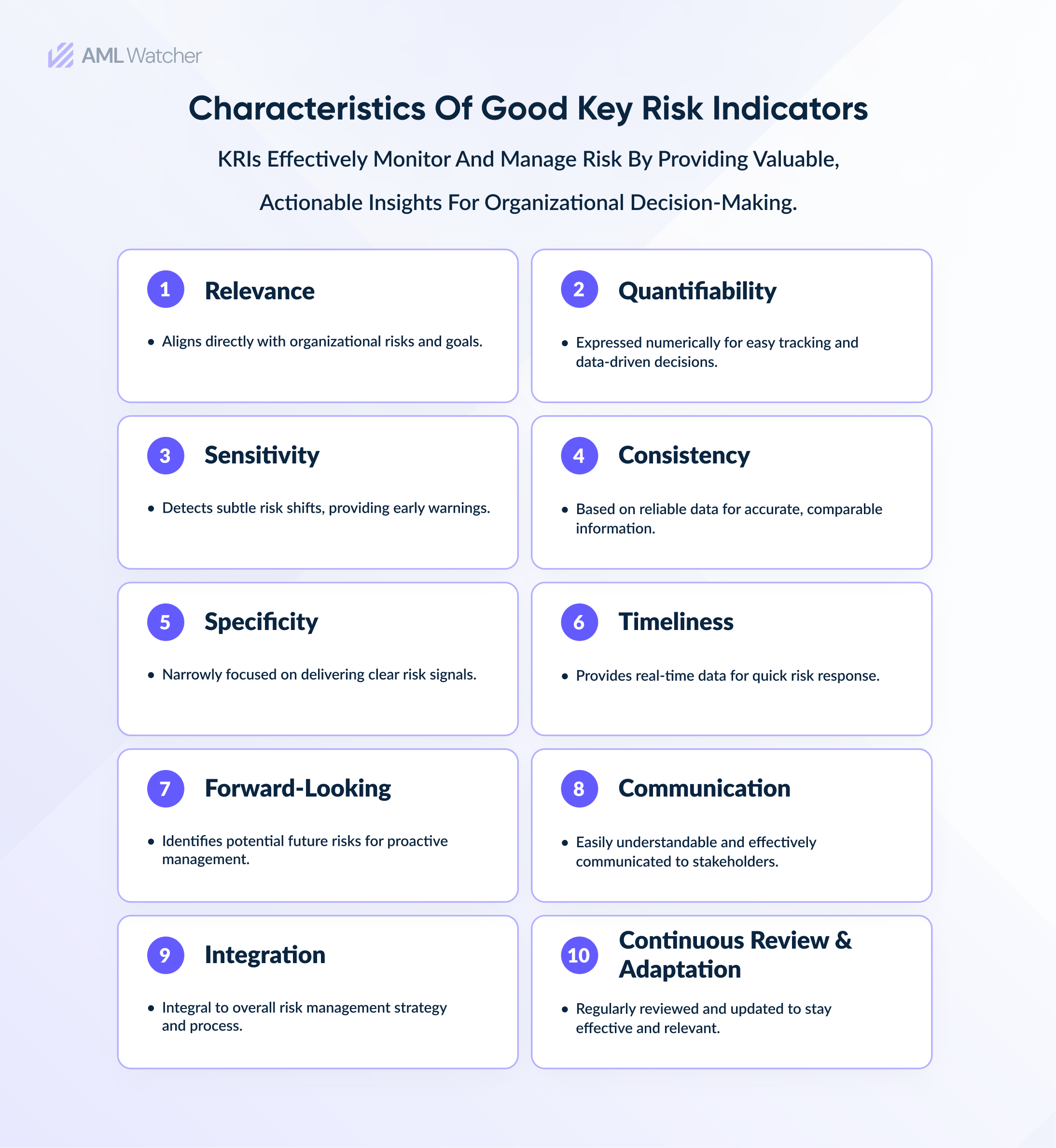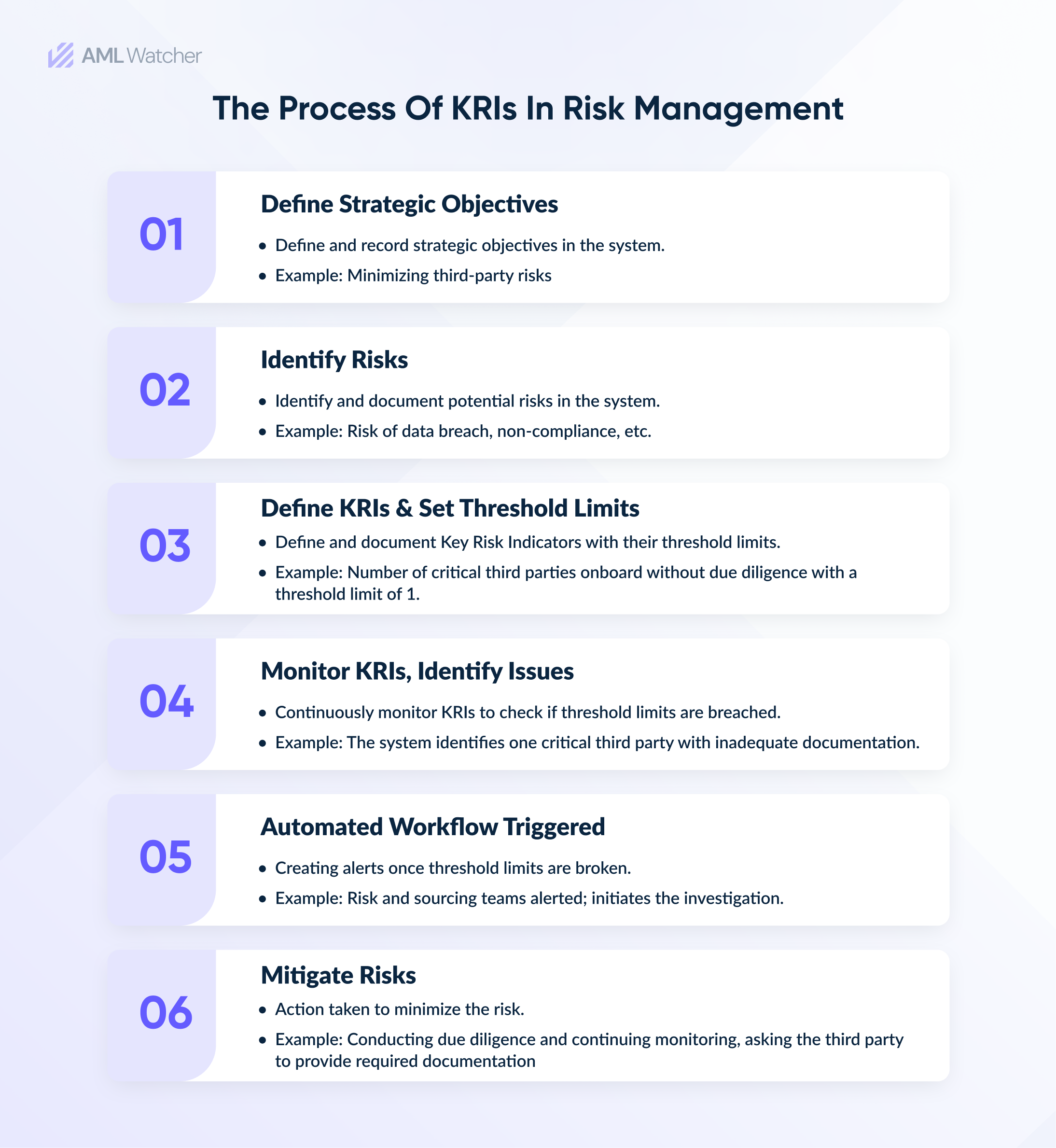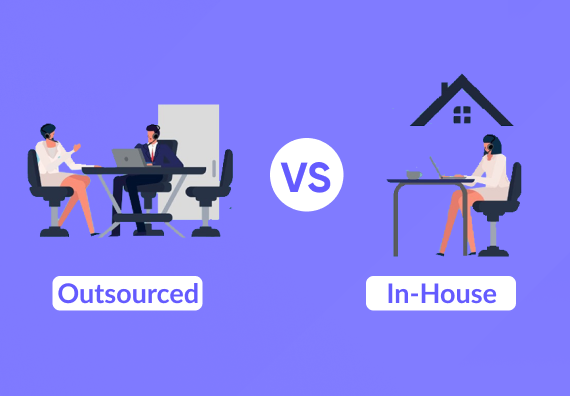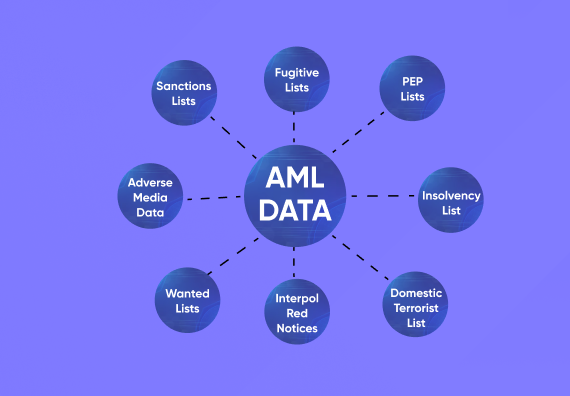
Top 8 AML Risk Indicators To Detect Money Laundering
Money laundering; a predicate global threat compromises the integrity of financial institutions and makes it easier for crime and terrorism to be funded. As per the most recent survey, financial frauds have cost fintech 1.7% of net revenue yearly which amounts to roughly $51 million. To aid with the management of illicit money movements, international AML regulations have mandated several rules; like the Bank Secrecy Act (BSA), which stipulates AML regulations, and the FINRA Rule 3310 requires financial institutions to develop comprehensive and reliable AML compliance programs and policies.
One of the vital factors of these AML programs is conducting risk assessment — identifying the current beneficial practices that highlight the common AML risk indicators that may require mitigation measures. Financial organizations and regulatory bodies use these key risk indicators (KRIs) as early warning systems to tackle this illegal conduct successfully.
If you want to know more about how these risk indicators can lower the threats of money laundering then stay with us because we will discuss in detail what are key risk indicators, their significance and components, and how organizations can streamline their AML compliance programs with their implementation.
Let’s start with the concept of an effective risk assessment process.
What Is A Particular AML Risk Assessment?
An AML risk assessment process is created to determine those areas, events, or rules within your organization that may be used by the traffickers of money to launder dirty money.
Risk assessments that fulfill the FINRA and BSA legal prerequisites may help to avoid AML fines, but such an approach also allows for simplifying and shaping an organizational procedure for addressing the key risk indicators. In the meantime, these systems help teams save time and trouble identifying particular areas of issues, record documented results, and they can put in action the corrective measure before the money possibly gets laundered.
In other words, risk assessments serve as a proactive measure because it is better to stop illegal activity before it begins than to rectify damage after it has already occurred.
How Do AML Risk Assessments Help To Combat Financial Crime?
Some businesses are mandated to carry out risk assessments as required by Regulation 18 under the Money Laundering, Terrorist Financing, and Transfer of Funds Regulations 2017 (MLR 2017).
At a very initial level, a risk assessment may help institutions to:
- Adopt a risk-based approach that allows to detect and mitigate money laundering.
- Help to give better options for assessing customers.
- Analyze risk reduction protocols.
- Design policies, systems, and measures that practically minimize the risk of financial crime.
- Be aware of the possible risks that could arise from the different business and commercial business activities.
Finally, risk mitigation could be a weapon for businesses to eliminate the chance of money laundering, financial fraud, or financing an act of terrorism. These measures are integral components of any AML compliance program measures and they may help to stay compliant with AML laws.
Who are “High-Risk AML Clients” & “Industries”?
The major component in deciding the money laundering risk is the construction of customer rating models which must detect critical factors to highlight high-risk sectors. These risk rating factors cover;
High-Risk Client Activities
- Must be reported due to huge amounts or small amounts of money movement.
- Irregular transaction patterns
- Extraneous monetary operations ( i.e. large purchases)
- Largest transactions performed by unknown buyers.
- Customers who do not provide you with certain details about their business.
High-Risk Business Sectors
- Gambling institutions like casinos
- Payment processing businesses
- Construction organizations
- Real Estate Industry
- Hospitality sector
Building a system that identifies potential AML risk indicators and analyzes them will assist financial institutions in developing a more precise customer risk rating model and thereby improve the strength of protective and preventive measures they have.
Does it seem informative till now? Let’s move forward and learn about the essential elements of AML risk indicators.
Components Of AML Key Risk Indicators
The most resounding phase in AML risk assessments is the key risk indicators or the metrics that are used to count and check potential risk exposure sites. This well-defined risk approach creates a very detailed risk categorization and, therefore, helps in understanding the risk scoring and its exposure level. Such tools may be used to assess risk-based money laundering programs and develop effective solutions as a response. Periodical reviewing and if necessary, updating the KRIs shall be very important in the investigation of money laundering cases. Essential AML risk indicators are:
Client Risk Indicators
- The pool of customers might use a money laundering scheme such as cash-intensive businesses, Politically Exposed Persons, and non-resident individuals
- Multiple KYC-related accounts with incomplete, deprived, or outdated information
- Creation of various customer relationships without meeting in person
- The proportion of risky customers compared to the total customers
Product/Service Risk Indicators
- Amount of wire transfers
- The total number of digital wallet activities or prepaid card transactions
- Value of non-commercial banking operations
- Money laundered through transactions from anonymous products or services
Geographical Risk Indicators
- The volume of transactions that start in or come from high-risk industries or jurisdictions with insufficient AML/CFT systems.
- Various correspondent banking relationships from high-risk territories
Operational Indicators
- The amount of AML alerts generated by the system.
- High rates of false positives in AML alert incidents.
- The number of alerts that cause the issuance of a Suspicious Activity Report
- Amount of trials to find the right model.
- Amount of time for alert closing and reporting to the Financial Action Task Force.
Transaction Behavior Indicators
- Number or quantity of quick money transfers via various accounts.
- The volume of trades done below the threshold
- Volume of large cash transactions
- The rate of foreign exchange transactions
Training & Culture Indicators
- Number of staff who successfully passed an AML risk assessment training program.
- Staff’s response & recommendation to AML training requirements
- The ratio of regular AML risk assessment workshops
Traditional Data & Audit Indicators
- Number of previous money laundering or fraud incidents
- Analyzing the findings from the internal and external AML audits and risk evaluations
- Feedback from regulatory post-inspection.
Unique Channels Risk Indicators
- Number and value of transactions made using mobile or online banking
- Regularity of shifts in the risk of existing goods and services
- The quantity of new goods or services released in the market without undergoing an AML risk assessment
Integrating Risk-Based Compliance Into The AML Program
Although risk assessments give the main indicators of money laundering, it is most efficient if they are in the context of a broader Anti-Money Laundering compliance program. To assist organizations make better decisions, this necessitates end-to-end integration that guarantees data from AML risk indicators is easily accessible. This smooth integration includes;
-
Risk Identification
Organizations should take a risk profile, risk categorization, and risk source along with KRI data to discover and reduce the processes, policies, and products that contribute to risk expansion.
-
Right Consolidation
Entities need to structurally integrate the risk assessment methods into other AML initiatives like authentication and verification of the transactions. Incorporation of risk assessment alone offers more value to be used as part of a larger AML program which is being recently recognized.
-
Proper Documentation
To improve the effectiveness of integration, record-keeping is truly indispensable. With early detection and recording of AML key risk indicators, AML compliance officers and higher management have a broader perspective to draw on, thus, this further gives them the ability to make future decisions based on alternative AML findings.
-
Keep Continuation
Risk Assessment remains an evolving process that serves as a vital part of uncovering historical data, high-risk sectors, and current transactions and predicting the emergence of risks aimed at resolving existing problems as well as future planning. Thus, no end objective of risk assessment is prescribed. Instead, assessments are ever-changing pieces that are needed to fit various situations and events that occur.
-
Regular Evaluation
Companies have to reconsider things, what is working, what isn’t working, what are high-risk industries, and what needs to be changed in their AML risk assessment program.
To conclude this all, understanding the 360-degree Anti Money Laundering Risk Assessment landscape demands a strategic approach that is informed, critical, and continually changing. Among others are recognizing and tracing the key risk indicators and preparing a plan of action, implementing enforcement strategies, and making sure that the organization constantly adjusts to the constantly evolving financial landscape- these are each steps that cumulatively work to guard the organization against the invisible curses of money laundering.
In this struggle, utilize AML Watcher’s customized Sanction Screening and Risk Scoring to improve your risk assessment and mitigation with their creative and adjustable solutions. As the institutions are facing evolving risk assessment & AML risk indicators challenges, adopting a reliable, quick, and compliant approach is not the priority of international regulators that meets their compliance requirements but rather recognize that it is the basis of good governance that assists in preserving integrity and building a positive public image in the context of constantly growing financial threats.
At AML Watcher, we are offering advanced technologies to help FIs automate the process of the risk assessment journey to track high-risk industries and clients with just one search. Our risk configuration feature offers reliable and real-time risk assessment of customers as information updates every 15 minutes. Our AI-backed AML compliance solutions deliver accurate risk scores for each search together with quick alert features to conduct an additional investigation or get detailed information about that search.
Feel free to contact us and get a free trial on how AML Watcher can streamline your risk assessment and risk indicator identification approach to stop financial fraud.
We are here to consult you
Switch to AML Watcher today and reduce your current AML cost by 50% - no questions asked.
- Find right product and pricing for your business
- Get your current solution provider audit & minimise your changeover risk
- Gain expert insights with quick response time to your queries
